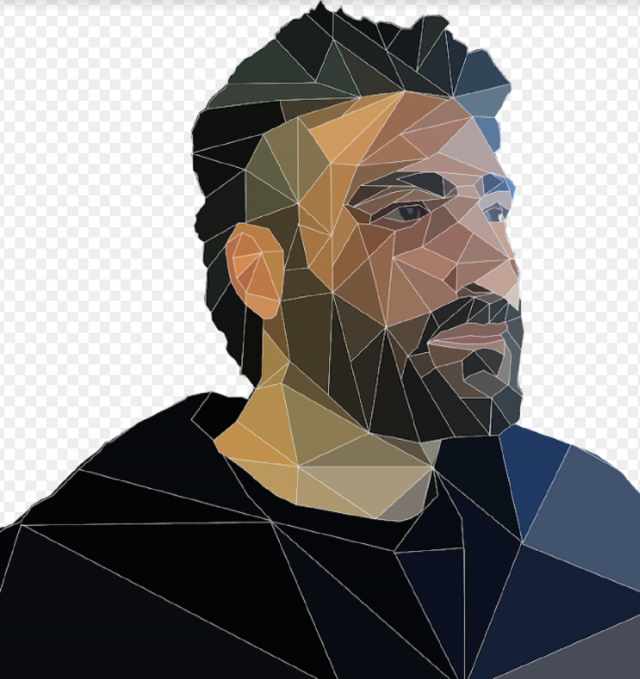As more governments enter the cryptocurrency space, the general idea of a central bank digital currency comes with its own issues and limitations.
To counter this, Atom Foundation came up with the concept of a Central Bank Digital Secure Coin (CBDSC).
This kind of innovation is something that world governments could actually deploy from a “plug and play” perspective as the benefits are obvious.
We spoke with Yoda Regev who is the founder of Atom Foundation, SmartSwap, and the CBDSC project.
Here is what he had to say.
Yoda Regev, Founder Atom Foundation SmartSwap.Exchange & CBDSC
E-Crypto News:
Please, can you briefly tell us what Central Bank Distributed Secure Coins are?
Yoda Regev, founder Atom Foundation, SmartSwap.Exchange & CBDSC: Central Bank Digital Secure Coin (CBDSC) is a technology that acts as a stablecoin alternative for governments and central banks that want to maintain a particular monetary policy on top of their CBDC.
The solution enables true digits fiat and allows central banks to easily implement monetary policy and to distinguish different types of taxable incomes, for example.
E-Crypto News:
How do CBDSCs differ from Central Bank Digital Currencies?
Regev: Current CBDC projects are not secure and do not protect against volatility, price manipulation, hacking and loss of funds.
CBDSCs however, are like comparing smartphones to the telegraph; they allow issuers more leeway to directly implement economic policy on the blockchain, and guard against currency volatility and mismatch.
Also, while CBDCs are exposed to the same pressures like market volatility and loss of funds, CBDSCs come with a built-in fluctuation freeze, eliminating any chances of volatility, driving value by pegging it to a pricing index that it is unable to deviate from, irrespective of the market volatility.
It also comes with enhanced protection features like a unique regulation layer that provides for timely fund recovery, cautioning against bad or potentially defaulting financial actors, and privacy-based zero-knowledge proof.
They also offer increased flexibility of regulation in terms of implementing a new, updated currency policy without the need to recall or commensurately reissue a new version of the currency, in order to extend any functionality or policy.
Related:What Challenges Arise When Designing A CBDC In 2021?
E-Crypto News:
How are CBDSCs alternatives to Stablecoins?
Regev: Any CBDC built based on the current stablecoin concept (ie pegged to a fiat currency) is exposed to volatility due to multiple factors.
Central banks polled by the Bank for International Settlements cited volatility as a major consideration when implementing a CBDC.
For example, it is reasonable to assume that with the acceptance of digital currencies, the conversion rate and the trading volume between digital assets may increase as well.
This gives the public one-click access for such trading and they may panic during catastrophic events (or a bear market) and pay over price to avoid losses and move into a stable currency, or the other way around when attempting investment opportunities such as bitcoin are available during a bull market.
Such volatility may be disruptive to monetary policy. The CBDSC includes a patent-pending solution with a built-in fluctuation freeze that removes any possibility of volatility due to such events, not even 0.001 percent.
The solution allows the CBDSC to check in real-time the current face value of a non-digital currency and freeze the value of the CBDC based on any fluctuations.
Once the CBDC is frozen, it is impossible for the CBDSC to move unless the received face value is an equal amount.
Related: Could a Digital Dollar Compete on Privacy? Fed Chairman Powell Hints It Might
E-Crypto News:
What will happen to stablecoins now that alternatives are emerging?
Regev: Stablecoins were always at risk to CBDCs and strong stablecoin companies saw this coming, filing for bank licenses. But like stablecoins, CBDCs are vulnerable to manipulation, black swan events, and volatility.
E-Crypto News:
What are the regulatory mechanisms that drive CBDSCs?
Regev: The CBDSC has a patent-pending regulation layer that is flexible and programmatic through voting or consensus by the public or by authorized individuals and groups of people set by the issuer.
Authorization can be given with some expiry date to align with elected official terms in office and allow for the peaceful transfer of power.
Authorization can also be revoked if needed by majority voting.
When an unexpected catastrophe happens, the public may panic which causes a run on the bank scenario and decline of currency value.
Issuers utilizing the CBDSC regulation layer will not have to worry about this risk because the monetary policy authority sets rules to govern the trading.
Also, the CBDSC regulation layer protocol allows issuers to control the CBDC in countless ways even after the digital currency is distributed to the public.
The flexibility of the regulation layer protects the ability to update the CBDC governance policy without the need to do a recall or reissuance of a new digital currency version merely to extend functionality or execute new policy.
Apart from this, issuers wanting to encourage their CBDC holders to spend funds to support economic growth or achieve other goals, can set in the CBDSC regulation layer automatic rules that benefit holders who trigger these rules with tax credits or with more airdropped CBDSC offering a direct subsidy utility.
Issuers can also set in the CBDSC regulation layer rules to prevent the use of their CBDC outside of their country (to restrict the outflow of capital) or prevent the CBDC to be sold to any holders that associate with blacklisted countries such as North Korea.
E-Crypto News:
How can the CBDSC project function without profit? Please can you explain that to us?
Regev: Over the last few years, the Atom Foundation has developed and filed global patents for this unique technology.
The CBDSC technology compared to current stablecoins is equivalent to comparing smartphones vs telegraph.
This powerful and heavily developed technology can resolve many of the issues CBDCs will be facing during initial rollout when operating side by side with traditional fiat and existing electronic money.
Atom Foundation understands that government CBDCs if done properly and safely present a major value to the economy and to the blockchain industry’s future.
Therefore, Atom Foundation offers issuers a lifetime license with the best technology in the market at no cost.
E-Crypto News:
What are the other decentralized finance (DeFi) integrations that CBDSCs bring to the table?
Yoda: The CBDSC can be deployed on any type of blockchain with smart contracts supported, and it can even include decentralized cross-chain if needed.
Also, the CBDSC can be supported by another patented technology that Atom Foundation created known as SmartSwap which allows one-click slippage free cross-CBDC settlement that will invariably be needed for international commerce, remittance and inter-government finance.
Factoring in the ability to do so early in the development cycle will give the adopter a substantial market advantage.
Related: European Central Bank’s CBDC Borrows Bitcoin’s Pseudo-Anonymity
E-Crypto News:
Please, can you tell us more about the special tools available within the Atom CBDSC ecosystem?
Regev: The CBDSC has a patent-pending regulation layer that is flexible and programmatic through voting or consensus by the public or by authorized individuals and groups of people set by the issuer.
This layer works to maintain monetary control, protect against volatility, remove black swan risks, prevent bad actor access, protect against hacking, recover lost funds, built in anti-money laundering, all while allowing taxation monitoring and giving the central government unlimited flexibility to execute monetary policy on the blockchain.
E-Crypto News:
How can governments and state actors get into the CBDSC ecosystem?
Regev: CBDSC drives value by pegging to a currency index or other pricing source.
Therefore, by many countries’ standards, it is considered derivative security limited to be used for retail users only by regulated issuers such as banks or registered companies.
This means governments, those with bank licenses, public companies, etc. will be the only issuers available to launch a CBDSC.
E-Crypto News:
What measures are put in place to prevent hackers and other bad guys from manipulating the CBDSC system?
Regev: The crypto industry suffers from loss of funds due to hacking, which usually hurts those less sophisticated. The typical reason is holders were not careful enough to hide their private key or recovery phrase.
Such human vulnerability can cause many families and businesses to go bankrupt when CBDCs become commonplace.
Wallets with CBDSC enjoy full hacking protection, because even if the private key and the recovery phrase are compromised, the CBDSC cannot move out of the wallets unless it has been swapped against the same face value order or sent as a gift order.
Plus, gift orders can be reversed back to the original wallet by the issuer or by a dispute trigger.
So this is not to say that hacking will stop or that users will change behavior because hackers will continue to improve and CBDSC protects all holders.
E-Crypto News:
What measures are in place to prevent manipulation?
Regev: Monetary policy creators are able to utilize the regulation layer to directly place their monetary policy.
Due to CBDSC zero volatility technology, the monetary policy will then be carried out in a trustless fashion.
Authorization can be given with some expiry date to align with elected official terms in office and allow for the peaceful transfer of power. Authorization can also be revoked if needed.
In order to prevent financial abuse, issuers can limit their CBDSC to whitelisted wallets and authorized providers.
For example, issuers can maintain a blacklist of dark web providers which the CBDSC is never allowed to be utilized or traded by.
Later if providers become blacklisted, the issuer can lock any CBDSC from their wallets including moving it out as part of court order.
E-Crypto News:
How can CBDSCs be matched against fiat currencies?
Regev: The CBDSC regulation layer protocol allows issuers to control the CBDC in countless ways even after the digital currency is distributed to the public.
The flexibility of the regulation layer protects the ability to update the CBDC governance policy without the need to do a recall or reissuance of a new digital currency version merely to extend functionality or execute a new policy.
E-Crypto News:
How do CBDSCs derive their value?
Regev: CBDSC derives its value by pegging to a currency index or other pricing source and therefore, by many countries’ standards, it is considered derivative security limited to be used for retail users only by regulated issuers such as banks or registered companies.
This means governments, those with bank licenses, public companies, etc. will be the only issuers available to launch a CBDSC.
E-Crypto News:
What are the possibilities that the CBDSC system creates for world governments?
Regev: CBDC’s have noted issues as shown in the Bank for International Settlements report. Most CBDC projects are focused on domestic needs.
It is recognized that improvements to cross-border payment settlements offer benefits to the global economy.
Current issues in cross-border payments include: fragmented and truncated data formats, complex processing of compliance checks, limited institution operating hours, legacy technology platforms, long transaction chains of custody, funding costs, and weak industry competition.
Potential benefits of CBDC implementation include: less intermediaries, enhanced efficiency, enhanced integration, enhanced technical compatibility, enhanced safety, and the mitigation of cross-border/cross-currency fluctuation risk.
CBDSC removes all these risks by focusing on decentralized flexibility, giving governments full control over the risks factors CBDCs are unable to achieve.
E-Crypto News:
How will inflation be handled within CBDSC ecosystems?
Regev: All countries are exposed to inflation and deflation. Some countries allow the market to lead while other countries prefer to apply their own policy.
The CBDSC allows the issuer to apply any policy on top of the CBDC face value by driving it in from market power (using an index or non-digital currency face value) or by applying manual or automatic changes to the CBDC face value.
Changes can either alter the value of the CBDSC from time to time triggered by events (for example instead of $1 the CBDSC will be worth X% of $1) or by increasing / decreasing the CBDSC face value over a certain period (for example every day, or every mined block on a blockchain).
E-Crypto News:
Who are the people behind Atom? Please, can you tell us more about them?
Regev: When building Atom Foundation, we started by selecting top experts in the field to ensure we were on the correct path when building brilliant solutions that are not currently in the market.
Our advisors include Dee Hock, who was the founder and former CEO of Visa Credit Card Association, David Weild IV, the Vice Chairman at NASDAQ, who is also known as the “father” of the JOBS Act, Mike Lorrey is the CTO Advisor and also the co-creator of the prototype of Bitcoin, Ken Goldman who was the former Chief Financial Officer of Yahoo, Sam Bourgi the Chief Editor Hacked.com, Koen Maris the IOTA Advisor Cybersecurity, Alon Goren the Founding Partner at Goren Holm Ventures, Robert Neivert, a Venture Partner at 500 Startups Head of the blockchain program. Our revolutionary advisors are mirrored by the strength of our team, including Kyle White, our COO and fantastic developer team.
Our goal is to have a team that wakes up passionate to change the world every day.
E-Crypto News:
What other surprises do you have for the cryptocurrency and allied technology space this year?
Regev: We are currently mainnet testing three projects including SmartSwap which is a zero volatility cross-chain swap with no wrapping, sidechains, or pools, DegenSwap a cross-chain aggregator, and bSWAP, a dynamic multi-dex.
On testnet, we have our stablecoin alternative project Freeze Finance, and our fundraising alternative Post Dex Offerings.
E-Crypto News:
What other projects are you involved with in the web3 space at the moment?
Regev: Currently, our project Jointer, the world’s first decentralized financial REIT is live and on step two out of five in it’s growth.
The project has witnessed face value growth of 2,163X since launch.
E-Crypto News:
Do you have any secrets you want to tell us? Care to spill the beans?
Regev: Well this may not be too much of a well kept secret but our projects at Atom Foundation reimburse fees and gas!
So instead of relying on Ethereum 2.0 to lower fees, we wanted to remove that barrier to DeFi and created a scalable way to reimburse these high fees.
Related: 5 Takeaways on Ethereum 2.0 From Vitalik’s ‘Beast Mode’ Blog Posts
E-Crypto News:
Where do you see the future of web3 going in the next decade?
Regev: The next decade will see more and more governments begin to enter the web3 space.
As a community, we need to work to ensure these governments create technologies that remain on public blockchains and that they are interoperable across decentralized finance.










